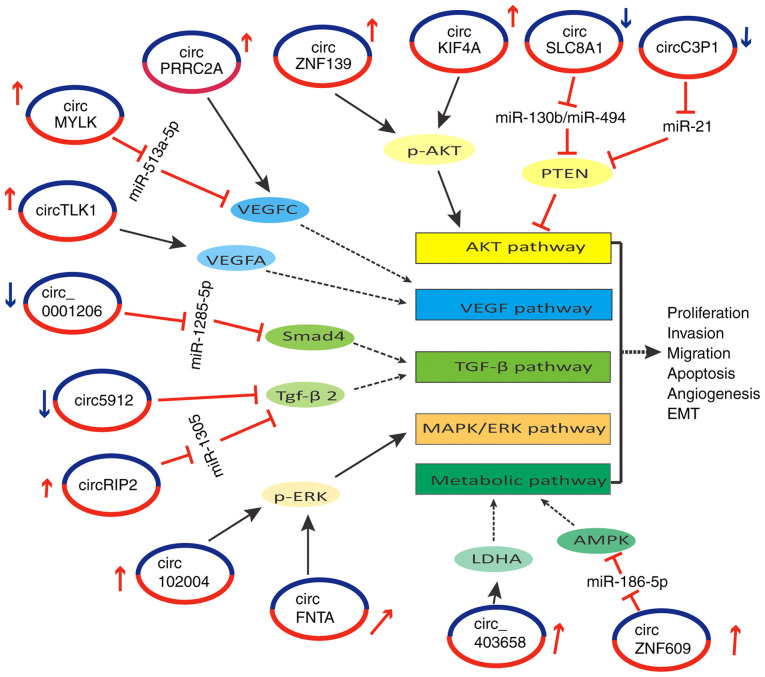Figure 2.
Representative diagram of circRNAs that interact with the circRNA-miRNA-mRNA regulatory network/RBPs and regulate oncogene or tumor suppressor signaling pathways. The diagram mainly shows that circZNF139 and circKIF4A activate the AKT pathway through p-AKT in BC, and that circFNTA, circ_403658 and circRIP2 activate the MAPK, metabolic and TGF-β signaling pathways through p-ERK, LDHA and miR-1305/TGF-β2, respectively, in BC. Furthermore, circ102004 and circZNF609 activate the MAPK and metabolic pathways through p-EKT and miR-186-5p/AMPK, respectively, in PCa. Moreover, circMYLK, circTLK1 and circPRRC2A activate the VEGF pathway through miR-513a-5p/VEGFC, VEGFA and VEGFC, respectively, in RCC. By contrast, circSLC8A1 and circ5912 deactivate the AKT and TGF-β pathways through miR-130b/miR-494/PTEN and TGF-β2, respectively, in BC. In addition, circ_0001206 deactivates the TGF-β pathway through miR-1285-5p/Smad4 in PCa, and circC3P1 deactivates the AKT pathway through miR-21/PTEN in RCC, which suggests that the circRNA-miRNA-mRNA interaction networks and RBPs that sponge circRNA serve a critical role in BC, PCa and RCC progression through signaling pathways. circRNA, circular RNA; EMT, epithelial-mesenchymal transition; RBP, RNA-binding protein; PCa, prostate cancer; BC, bladder cancer; RCC, renal cell cancer; miR, microRNA.

